
Betting big on 5G: HFCL's gameplay of telecom growth, healthy order book, and right alliances
Riding on the expected telecom and 5G expansion, HFCL is well positioned with 5G-centric products and its optical fiber cables business. With a strong order book and an improving financial performance, the company will now hope for renewed investor interest
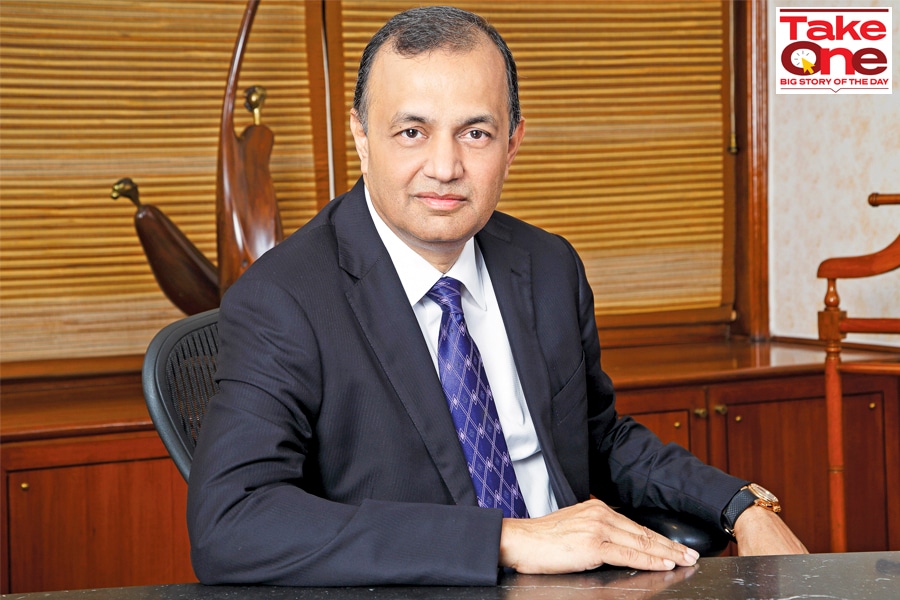 Mahendra Nahata, Founder and managing director, HFCL
Mahendra Nahata, Founder and managing director, HFCL
On October 1, at a packed India Mobile Congress, a digital technology event in New Delhi, Mahendra Nahata, the founder and managing director of HFCL, a telecom enterprise and communications products provider, was seen exhibiting the new Wi-Fi 7 Access Points, built in collaboration with Qualcomm. This product will support peak data rates of over 10 gigabits per second (Gbps)—almost double the speed of current such products—and latency under 2 millisecond (low latency means minimum data transfer delay), compared to 5 Gbps and 10 ms of current Wi-Fi 6 products.
Reliance Industries’ Chairman and Managing Director Mukesh Ambani, whose subsidiary Jio Platforms is India’s largest telecom operator, launched the Wi-Fi 7 AP and an 8T8R radio unit while watching its features. Jio is an important customer of HFCL’s, forming around a fifth of its order book. HFCL has laid the 4G fiber-to-the-home (FTTH) network and also mobile services for Jio in North India.
Unlike previous Mobile Congress events, this year the talk of 5G technology had turned to reality from being a promise or need. In October, India’s 5G technology network was officially launched by Prime Minister Narendra Modi, with two of the largest telecom companies Jio and Bharti Airtel deploying their 5G network in phases.
In this scenario, a Wi-Fi 7 access point compliments the 5G rollout in India, offering extreme speeds and high capacity. It will improve connectivity and speed in high density places like airports, railway stations, shopping malls and factories.
Nahata started HFCL in 1987, once manufacturing transmission equipment in collaboration with Southeast Asian companies. But in the years and decades to follow, when India started to grow and expand its telecom networks, the optical fiber cables (OFC) business became its engine for growth. Since 2015, HFCL has shifted its focus towards exporting telecom equipment and optical fiber cables to over 30 countries at present, from 16 in FY15. Exports form 18 percent share of revenues, HFCL’s June-ended data shows.




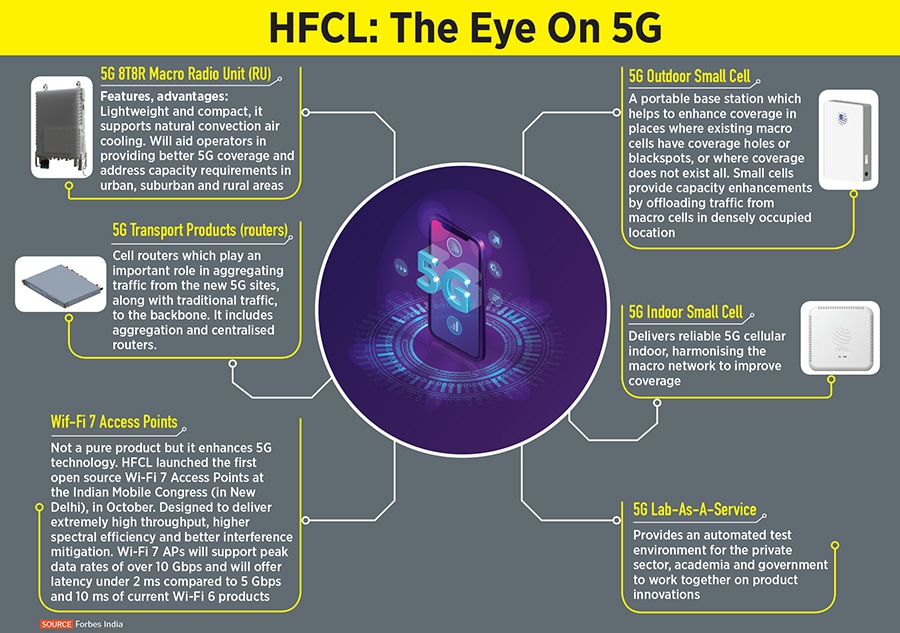
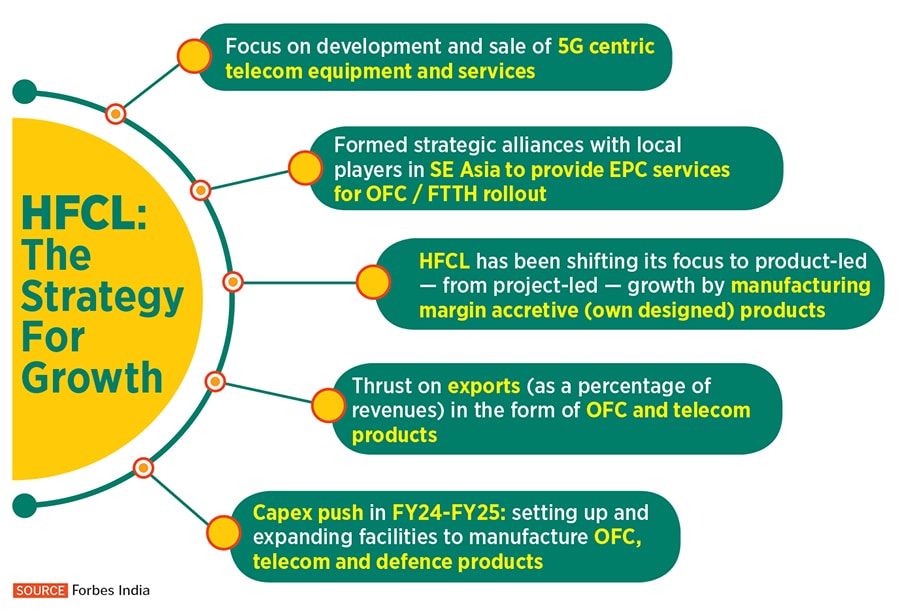
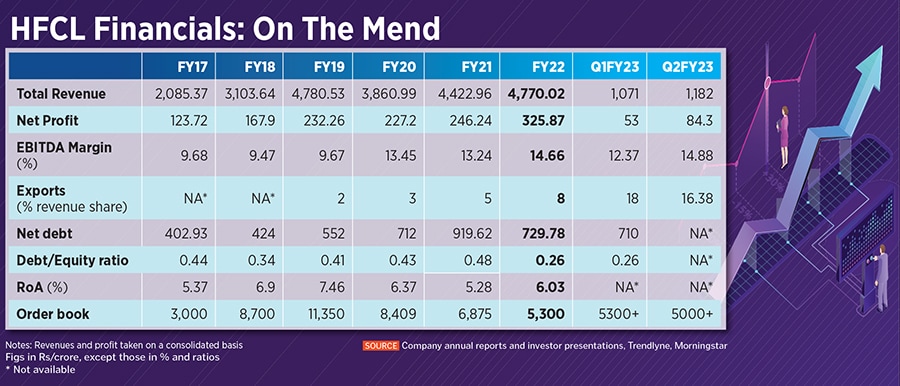
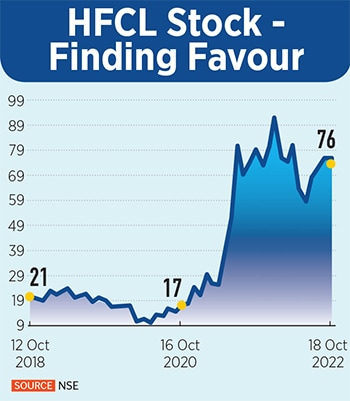 HFCL’s credit ratings have been improving as revenues grown, order book diversified and profitability improved in recent years. Care Ratings in July gave a Single A credit rating with a ‘stable’ outlook towards long-term credit loans and A2+ for short-term bank credit, compared to an earlier ‘negative’ rating in FY20.
HFCL’s credit ratings have been improving as revenues grown, order book diversified and profitability improved in recent years. Care Ratings in July gave a Single A credit rating with a ‘stable’ outlook towards long-term credit loans and A2+ for short-term bank credit, compared to an earlier ‘negative’ rating in FY20.



